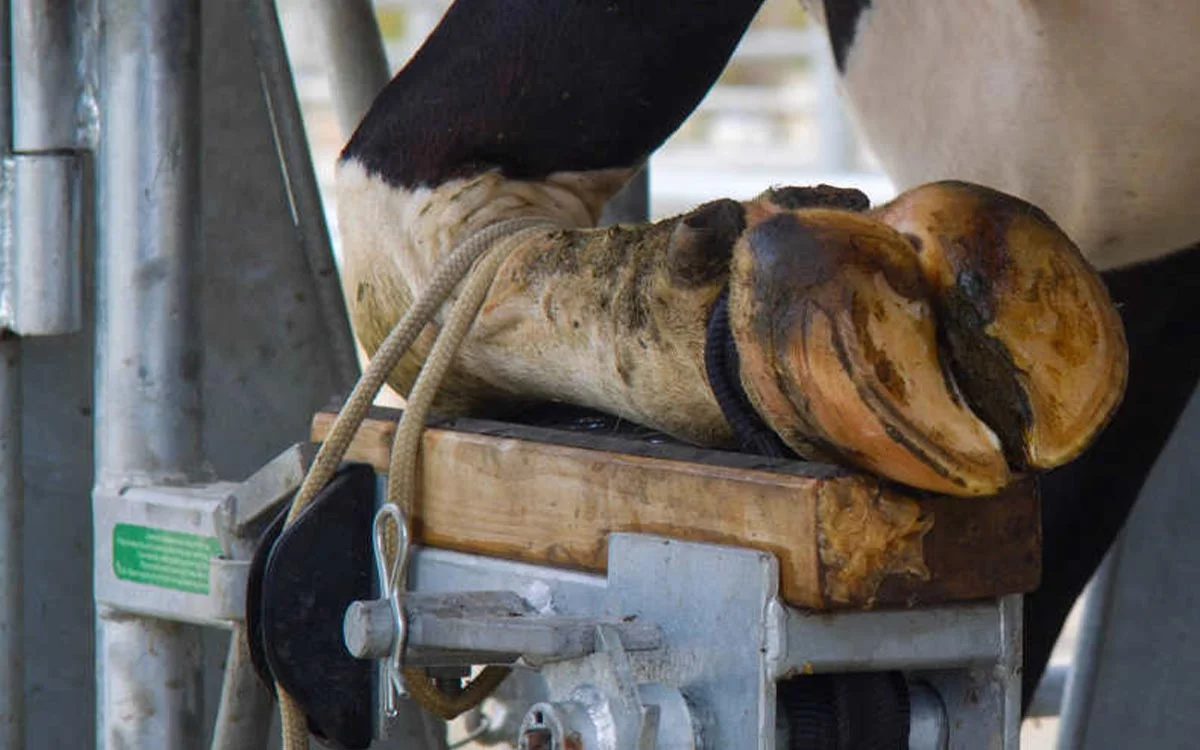Will rising milk prices in late 2024 boost the dairy industry? Discover how export booms, domestic demand, and production trends shape the future of milk costs.

In an often unpredictable economic context, the dairy sector stands out as a source of resilience and hope as we enter the second half of 2024. Milk prices are expected to climb, indicating a healthy rebound and expansion. This tendency is supported by an enormous jump in cheese exports in early 2024, which reached record highs and increased by 75 million pounds. This considerable gain highlights worldwide solid demand and boosts home output. These advancements are pretty significant. According to one industry researcher, tracking milk pricing provides vital information into larger economic patterns and consumer behavior. This forecast reflects a complicated interaction between lower milk supply owing to a diminishing cow herd and unfavorable weather and rising demand for dairy products, notably butter. The unexpected jump in cheese exports in early 2024, hitting record highs and increasing by 75 million pounds, demonstrates the dairy industry’s resiliency. This considerable gain highlights worldwide solid demand and boosts home output. Emboldened by this trend, manufacturers spend heavily on technical developments and efficiency, paving the path for a more competitive and sustainable sector. The export surge stabilizes milk prices, serving as a key buffer against domestic and weather-related issues.
Cheese Exports Reach New Heights, Reflecting Global Demand and Economic Vitality
In early 2024, cheese exports increased dramatically, notably in February, March, and April, with shipments climbing by 75 million pounds. This increase reflects the growing worldwide demand for American dairy products, strengthening the sector’s economic health. This export boom shows intense market penetration and increased profitability for dairy farmers, encouraging more investment and innovation.
Strategic Marketing and Dining Revival Drive Domestic Milk Demand Surge
Domestic demand for milk is expanding, thanks to successful advertising efforts and increased restaurant traffic. Aggressive marketing has emphasized milk’s nutritional advantages, appealing to health-conscious customers and increasing sales. Following the pandemic, the restaurant industry has rebounded, increasing milk consumption as more dairy-based meals emerge on menus. This provides a robust demand environment, affording dairy producers significant expansion opportunities and driving more business investment.
Complex Challenges of Reduced Milk Output: Addressing Multiple Threats to Industry Optimism
Reduced milk yield presents a multidimensional challenge to the dairy industry’s positive outlook. The diminishing cow herd is a critical component, driven by economic factors such as increased feed prices and tightening profit margins, which have forced many farmers to downsize. Decisions to reduce herds and move to beef production have exacerbated this tendency.
Hot temperatures may negatively impact animal health and milk output. Notably, places such as Texas and California have suffered significant consequences due to protracted heat waves, which have reduced milk production per cow. Heat stress causes cows to consume less grain and make less milk, which impacts the whole supply chain.
Highly Pathogenic Avian Influenza (HPAI) complicates matters even more. Although HPAI mainly affects poultry, it has resulted in more robust biosecurity measures on animal farms, raising operating costs and logistical challenges. Furthermore, HPAI’s ripple effects in agriculture might disrupt feed supply and price, thus affecting milk yield.
Reduced milk production is due to diminishing cow herds, harsh weather, and HPAI. Navigating these challenges requires constant monitoring and adaptable methods to fulfill local and global demands.
Strategic Adaptations to Butter Boom: Breeding for Higher Butterfat and Embracing Jerseys
The growing demand for butter and rising prices have significantly increased milk checks, providing financial comfort to dairy farmers. More excellent butter prices translate immediately into greater rewards, motivating farmers to concentrate on expanding the butterfat percentage of their milk. This economic motivation has prompted intentional breeding for increased fat production, milk output, and earnings. Crossbreeding has become popular, combining favorable features to increase milk volume and butterfat content. The transition to Jersey cows, recognized for producing high-butterfat milk, shows the industry’s response to market needs. These solutions assist manufacturers in meeting market demands while also stabilizing revenue in the face of industry-wide uncertainty.
Shifting Consumer Behaviors and Economic Pressures Shape Dairy Market Dynamics
The contemporary macroeconomic situation is complicated, with significant gaps across income categories. Upper-income customers retain consistent purchase habits, demonstrating resistance to minor economic volatility. However, middle- and lower-income families have tighter budgets and less disposable income, limiting their purchasing power.
One significant part of this financial hardship is growing high credit card debt amounts, which indicates economic misery among lower-income groups. High-interest debt decreases disposable income, resulting in cautious consumer behavior and lower expenditure on non-essential commodities, such as luxury dairy products. These pressures make them more vulnerable to future economic shocks, possibly hurting total market demand.
Understanding these dynamics is critical for forecasting market changes and generating accurate forecasts regarding milk pricing. While the wealth of upper-income people may protect certain dairy sales, the overall market’s stability is highly reliant on the financial health of medium and lower-income customers. They are developing strategies to help these populations, which might be critical for maintaining robust domestic demand in the face of economic uncertainty.
Proactive Strategies Essential for Predicting Milk Prices: Balancing Exports, Domestic Demand, and Production
Predicting milk prices for the next months requires carefully considering several crucial elements. First and foremost, the dairy industry must continue its export momentum. Recent advances in cheese exports must be sustained to ensure significant worldwide demand. Second, preserving the local market is as essential. The restaurant sector’s rebirth and vigorous advertising activities have significantly increased milk consumption in the United States. These efforts should continue for price stability.
Additionally, avoiding output drops is critical. The sector confronts issues such as a declining cow herd and external dangers such as Highly Pathogenic Avian Influenza (HPAI), which might have serious pricing consequences if not appropriately managed. These elements form a delicate balance that determines market circumstances.
If these components are not adequately controlled, there may be negative consequences. Export declines due to economic shifts or trade policy changes may lead prices to fall. Similarly, budget cutbacks or lower returns from domestic promotional operations may diminish demand, putting downward pressure on pricing. A rise in milk output might potentially upset the equilibrium, overwhelming the market and pushing down prices. As a result, accurately projecting milk prices requires excellent management of export momentum, domestic demand, and supply levels. Successfully handling these variables will determine whether the sector grows or shrinks in the following months.
The Bottom Line
Looking forward to the second half of 2024, the increase in milk prices indicates cautious confidence in the dairy industry. Despite obstacles such as a lower milk supply, a declining cow herd, and environmental constraints, the sector is sustained by solid cheese exports and a revival in domestic demand fueled by creative marketing and rising restaurant visitation. From record-breaking cheese exports to continuing strong butter demand, the dairy industry’s resiliency and potential for expansion are evident. However, sustaining this pace demands constant attention in global and local markets. Export strength and local dairy demand must be maintained to prevent price drops in milk. Producers could respond strategically by crossbreeding for increased butterfat, adopting hardy breeds like Jerseys, or utilizing promotional initiatives to sustain profitability. Understanding consumer purchasing patterns in economic uncertainty is critical for maintaining demand. Proactive and informed initiatives are essential to the success of the dairy sector. Continuous market analysis and adaptability to production and demand changes will be crucial. By implementing these ideas, the industry may overcome challenges and seize opportunities. Achieving a secure and profitable dairy future will need accuracy and foresight in balancing supply and demand.
Key Takeaways:
- High beef prices and declining feed costs are bright spots for the dairy industry.
- Innovative practices and advanced herd management tools, enabled by improving milk prices, enhance sustainability and profitability.
- Operational stability and growth can be achieved through the adoption of new technologies.
- Challenges include regional production disparities and slower domestic demand in certain areas.
- Diversification and additional revenue streams provide financial relief and stability across different regions.
- Read more about regional challenges and opportunities in areas such as the West, Great Plains-central region, Midwest, Northeast, and Southeast.
Summary:
Milk prices are rising in the second half of 2024, indicating resilience in the dairy sector. Cheese exports have reached record highs, and manufacturers are investing in technical developments to stabilize prices. Domestic demand for milk is expanding due to successful advertising and increased restaurant traffic. Aggressive marketing emphasizes milk’s nutritional advantages, appealing to health-conscious customers and increasing sales. The restaurant industry has rebounded, increasing milk consumption. However, reduced milk output presents complex challenges, including increased feed prices, tightening profit margins, and the impact of hot temperatures on animal health and milk output. Dairy producers must constantly monitor and adapt their methods to meet local and global demands to maintain their positive outlook.












